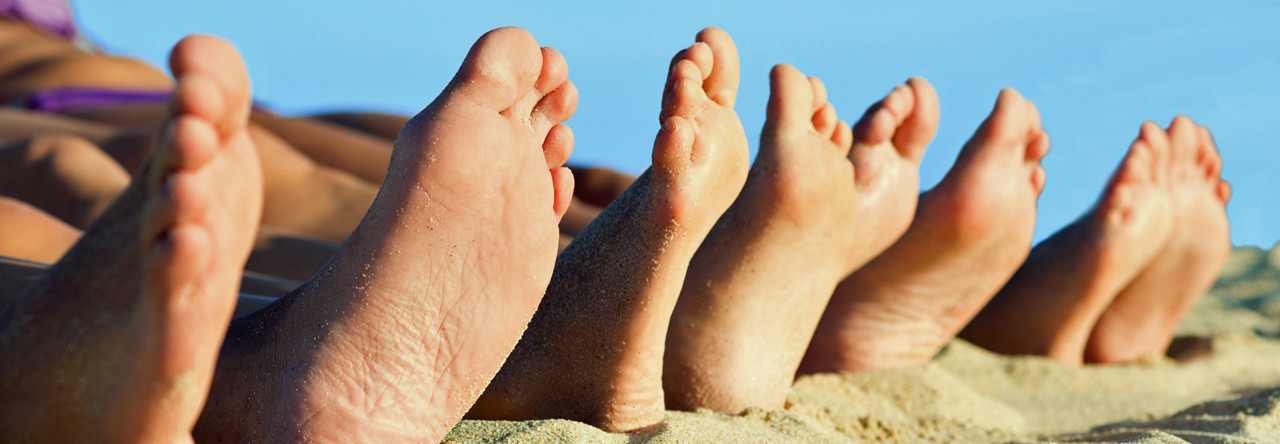Morton’s Toe or Morton’s Foot is really common. It’s easy to recognize because the second toe is longer than the Big Toe. In fact, almost everyone has it.
About 50 years ago, Dr. Brian A. Rothbart, DPM, PhD, discovered that when the ankle is aligned close to its optimal functional position to best support the body, the big toe is elevated. When the foot is in its optimal position the big toe is not weight bearing. For many people it doesn’t even touch the ground
However, Morton’s toe can lead to pressure on the second toe (right behind the second toe at the ball- of-the-foot) resulting in pain similar to the discomfort associated with metatarsalgia. The constant pressure placed on the longer second toe while walking or standing can lead to callus formation under the second toe due to pressure.
Selecting proper footwear with a high and wide toe area is ideal for treating this condition. You might even want to buy footwear a half size to a size larger to accommodate your longer second toe.
Sometimes orthotics can be used to keep the foot aligned along with a metatarsal pad to reduce stress on the ball-of-the-foot. Proper footwear combined with an effective orthotic will provide relief from pain associated with Morton’s Toe.
Category: Morton’s Toe
A neuroma is a benign tumor of a nerve. Morton’s neuroma isn’t really a tumor, but just a thickening of the tissue that surrounds the digital nerve which leads to the toes. It usually happens between the third and fourth toes because of an irritation, injury or a lot of pressure.
Most of the time you can’t see anything by just looking at your foot. But you may feel a burning pain in the ball of your foot that may radiate into the toes. The pain generally worsens when walking, running and also wearing your shoes. In fact, you usually can’t feel it at all when not on your feet.
You should have a doctor diagnose your pain. During the exam, your doctor will usually be able to feel the mass between your bones. He will also try to replicate the pain and look for calluses or evidence of stress fractures in the bones that might be the cause of the pain.
Initially you will need to change your shoes. Avoid high heels or tight shoes, and wear wider shoes with lower heels and a soft sole. This lets the bones spread out and might reduce pressure on the nerve, giving it time to heal. Your doctor might also recommend shoe inserts and pads to relieve irritation and the pressure the nerve. In some cases, your doctor may want to use an injection of a corticosteroid medication to reduce the swelling and inflammation of the nerve, bringing some relief. If all else fails, surgery can resect a small portion of the nerve or release the tissue around the nerve, and generally involves a short recovery period.
Interestingly, Morton’s neuroma is 8 times greater in women than in men.
